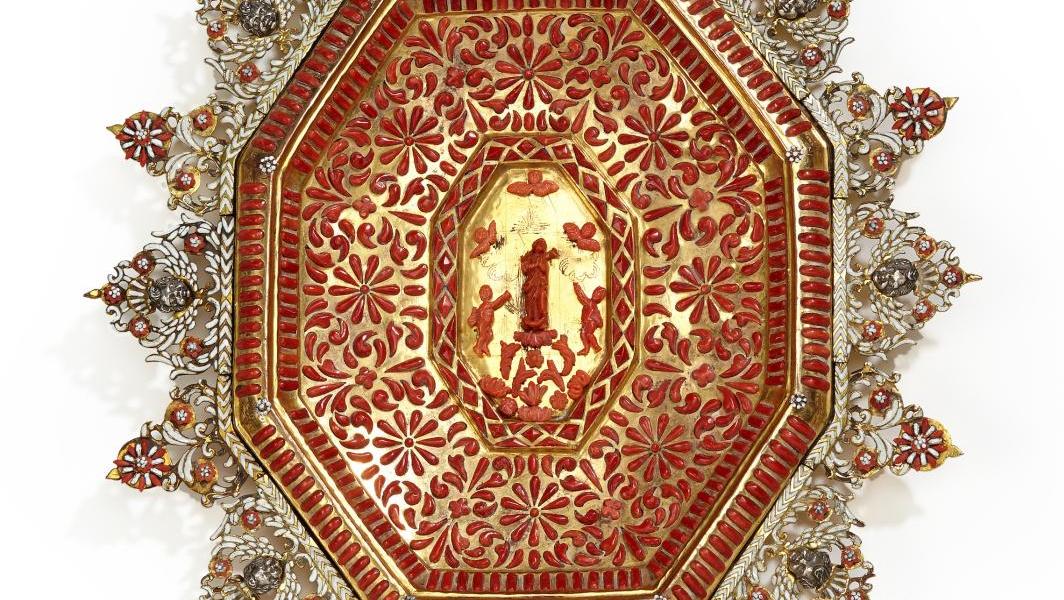Coral, the jewel of the Mediterranean, travelled the same path as the Spice Route in ancient times. Precious and coveted as far afield as Asia, it is a rare, delicate ornament of the most sumptuous objets d’art.
Trapani, late 17th to early 18th century. Gilded copper plaque, enamelled bronze, coral and silver, depicting the Immaculate Conception surrounded by cherubs in the centre, 39 x 35 cm. Neuilly-sur-Seine, 28 May 2015. Aguttes OVV. Cabinet S.P. Étienne - S. Molinier.
Result: €57,375
Coral was a disputed Mediterranean treasure as long ago as Antiquity. A member of the animal kingdom, it was considered as precious as pearls, ivory or amber: the coral trade was already lucrative in the first century of our era. Pliny the Elder mentioned coral being exported to central Europe and Asia. At first, it was gathered on beaches, in the Middle Ages, before being harvested by organized fishing expeditions. Traders from the Far East exchanged diamonds, precious stones and spices for this exceptional merchandise. In the 14th and 15th centuries, Barcelona dominated the export market and the art of coral, but even that was not enough: the city sought to obtain a monopoly by forbidding coral craftsmen, under pain of death, from emigrating and taking their tools with them to Islamic lands. Trailed by the powerful port cities of Genoa…
com.dsi.gazette.Article : 16210
This article is for subscribers only
You still have 85% left to read.
